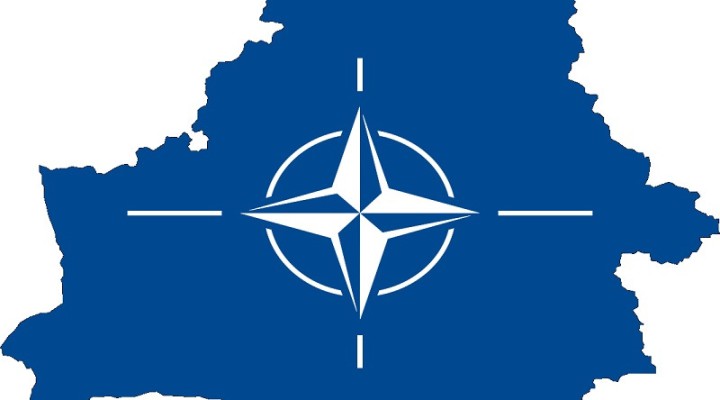NATO Might Consider Belarus To Be “Low-Hanging Fruit” During Kiev’s Upcoming Counteroffensive

A preplanned Color Revolution could serve as the public pretext for NATO-backed Belarusian “rebels” to invade their country from Ukraine with full backing from Kiev’s “Lublin Triangle” allies in Poland and Lithuania alongside its British one from last year’s trilateral security pact. Those first two’s potential involvement in complementary invasions could lead to nuclear brinksmanship between Moscow and the West, so it’ll probably be avoided, though that can’t be taken for granted.
“Ukraine’s Proxy Invasion Of Russia Was Infowar Copium After Losing Artyomovsk”, but it might also have served the ulterior purpose of probing Russia’s border defenses for deciding whether to attack more of its pre-2014 territory or Belarus’ during its upcoming counteroffensive. The second-mentioned front has been quiet over the past few months, but the former commander of the Polish land forces just brought it to everyone’s attention yet again by proposing that his country support a so-called “uprising” there.
His ominous innuendo implying the onset of another Color Revolution in Belarus was condemned by the Kremlin and might have been intended to precondition the public for some unexpectedly intense activity there in the near future. The model that was employed earlier this week against Russia consists of NATO-backed “rebels” attacking one of Ukraine’s neighbors on the pretext of “freeing it from dictatorship”, the narrative of which can also easily be applied towards Belarus considering its reputation in the West.
Poland envisages merging with Ukraine into a de facto federation that it hopes will one day include Belarus, which is part of its grand strategic plot to restore its long-lost commonwealth in order for it to then serve as the center of gravity in Central & Eastern Europe. Warsaw already hosts many anti-government figures from Belarus, as does Lithuania, both of which firmly support Kiev. It therefore wouldn’t be surprising if those two tried cooking something up against their shared neighbor.
Poland, Lithuania, and Ukraine are part of the “Lublin Triangle” that was created in 2020, while last year saw the creation of a trilateral security pact between the UK, Poland, and Ukraine. These complementary platforms can be jointly leveraged to involve Lithuania and the UK in any upcoming Ukrainian-emanating threats to Belarus, which would be supervised by NATO and its US leader. All of them might have concluded that Belarus is “low-hanging fruit” that they can’t help themselves from “plucking”.
Should they arrive at that determination, then there’s a high risk that replicating this week’s proxy invasion of Russia in Belarus could lead to nuclear brinksmanship between Moscow and the West in the event that NATO members Poland and/or Lithuania let their territories be used for these provocations. The Kremlin would rightly regard that scenario as NATO thinly disguising its invasion of its Union State’s Belarusian half with whom Russia has mutual security obligations, thus leading to a global crisis.
On the other hand, limiting this provocation to Ukraine could contain the military-political fallout since that former Soviet Republic isn’t a formal member of NATO, thus possibly mitigating Russia’s response both rhetorically and in terms of substance unless the “rebels” succeed in gaining ground in Belarus. In that case, Russia and its ally would have to forcibly remove them, though this could lead to Poland threatening an intervention if this activity takes place in proximity to its border with Ukraine.
What Kiev is looking for is a way to gain leverage over Russia that could then be wielded to coerce concessions from it during future peace talks whenever they might ultimately begin. If they and their patrons concluded that it’s impossible to do this by seizing parts of Russia’s pre-2014 territory, then they might settle for attempting to replicate this week’s incident in Belarus instead, albeit potentially timed with another round of Color Revolution unrest for maximum destabilization.
In this sequence of events, a preplanned Color Revolution could serve as the public pretext for NATO-backed Belarusian “rebels” to invade their country from Ukraine with full backing from Kiev’s “Lublin Triangle” allies in Poland and Lithuania alongside its British one from last year’s trilateral security pact. Those first two’s potential involvement in complementary invasions could lead to nuclear brinksmanship between Moscow and the West, so it’ll probably be avoided, though that can’t be taken for granted.
Looking ahead, the silence on the Belarusian front of the New Cold War in recent months might just be the proverbial “calm before the storm” if the former Polish land commander’s ominous proposal for his country to support another Color Revolution there is more than just ultra-nationalist speculation. It’s too early to tell whether Belarus will be targeted during Kiev’s upcoming NATO-backed counteroffensive, but the case was made that the bloc regards it as “low-hanging fruit” that it can’t help itself from “plucking”.
 TheAltWorld
TheAltWorld 
0 thoughts on “NATO Might Consider Belarus To Be “Low-Hanging Fruit” During Kiev’s Upcoming Counteroffensive”